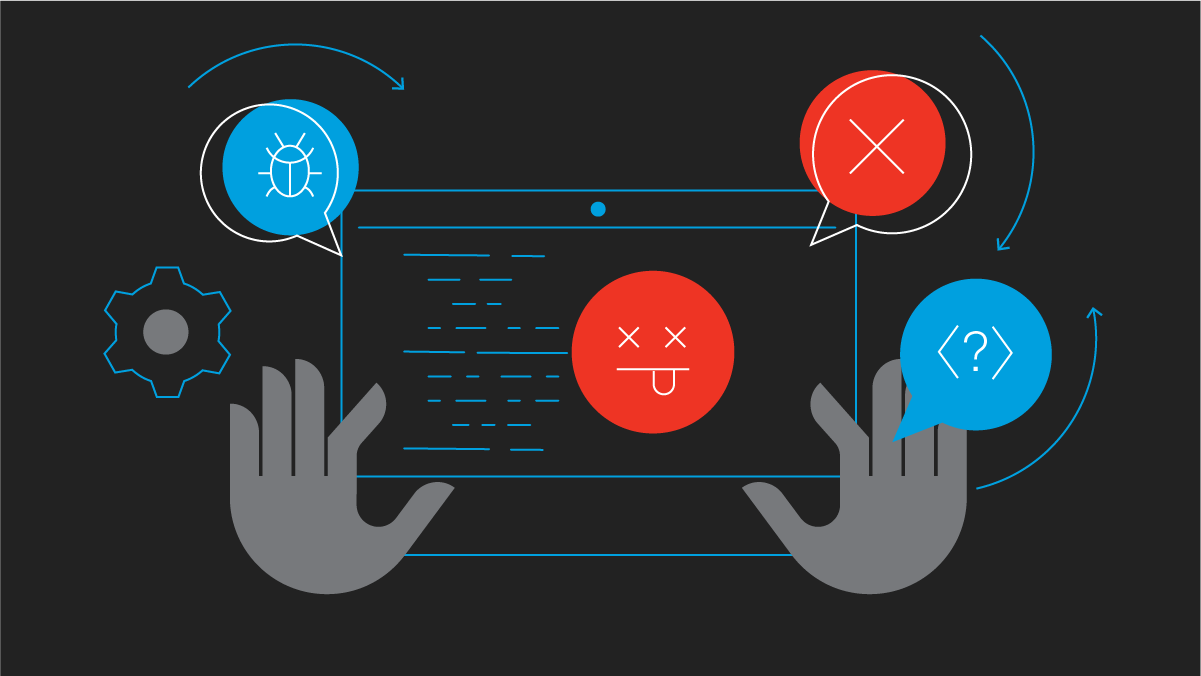Testing System Resilience in DevOps: Unleash Chaos, Uncover Strength.
Chaos Engineering is a practice that aims to test the resilience of a system in a DevOps environment. It involves intentionally injecting controlled failures and disruptions into a system to identify weaknesses and vulnerabilities. By simulating real-world scenarios, Chaos Engineering helps organizations proactively identify and address potential issues before they impact the system’s performance or availability. This approach allows teams to build more robust and reliable systems, ultimately improving the overall resilience and stability of their applications.
The Importance of Chaos Engineering in Ensuring System Resilience
Chaos Engineering: Testing System Resilience in DevOps
In the fast-paced world of software development, ensuring the resilience of systems is of utmost importance. With the increasing complexity of modern applications and the ever-growing demand for uninterrupted service, it is crucial to have mechanisms in place to identify and address potential weaknesses before they turn into catastrophic failures. This is where Chaos Engineering comes into play.
Chaos Engineering is a discipline that focuses on intentionally injecting controlled failures into a system to uncover vulnerabilities and improve its overall resilience. By simulating real-world scenarios and pushing systems to their limits, Chaos Engineering allows organizations to proactively identify and address potential weaknesses, ensuring that their systems can withstand unexpected events and continue to deliver reliable services to their users.
One of the key reasons why Chaos Engineering is so important in the context of DevOps is its ability to uncover hidden dependencies and single points of failure. In complex distributed systems, it is often difficult to anticipate how different components will behave under stress or failure conditions. By intentionally introducing failures and monitoring the system’s response, Chaos Engineering helps identify these dependencies and allows organizations to design more resilient architectures.
Moreover, Chaos Engineering provides valuable insights into the performance and scalability of systems. By subjecting a system to various failure scenarios, organizations can gain a deeper understanding of its limitations and bottlenecks. This knowledge can then be used to optimize the system’s performance, ensuring that it can handle increased loads and maintain its responsiveness even under adverse conditions.
Another crucial aspect of Chaos Engineering is its role in fostering a culture of resilience within organizations. By regularly conducting chaos experiments, teams become more proactive in identifying and addressing potential weaknesses. This mindset shift from reactive to proactive problem-solving is essential in today’s fast-paced and highly competitive environment, where downtime can have severe financial and reputational consequences.
Furthermore, Chaos Engineering helps organizations build confidence in their systems. By subjecting their systems to controlled failures and observing their behavior, organizations can gain a deeper understanding of their system’s capabilities and limitations. This knowledge allows them to make informed decisions about their system’s architecture, capacity planning, and disaster recovery strategies, ultimately leading to more robust and reliable systems.
It is worth noting that Chaos Engineering is not about causing chaos for the sake of it. It is a disciplined approach that requires careful planning, monitoring, and analysis. Chaos experiments should be conducted in a controlled environment, with clear objectives and well-defined metrics for success. Additionally, organizations should have mechanisms in place to quickly detect and mitigate any unexpected issues that may arise during these experiments.
In conclusion, Chaos Engineering plays a vital role in ensuring the resilience of systems in the DevOps world. By intentionally injecting failures and monitoring system behavior, organizations can proactively identify and address potential weaknesses, uncover hidden dependencies, and optimize system performance. Moreover, Chaos Engineering fosters a culture of resilience and builds confidence in system capabilities. However, it is crucial to approach Chaos Engineering with discipline and caution, ensuring that experiments are conducted in a controlled environment and unexpected issues are promptly addressed. With Chaos Engineering as part of their toolkit, organizations can stay ahead of potential failures and deliver reliable services to their users.
Implementing Chaos Engineering Practices in DevOps: Best Practices and Challenges
Implementing Chaos Engineering Practices in DevOps: Best Practices and Challenges
Chaos engineering is a practice that has gained significant attention in the world of DevOps. It involves intentionally injecting failures and disruptions into a system to test its resilience and identify potential weaknesses. By simulating real-world scenarios, chaos engineering helps organizations build more robust and reliable systems. However, implementing chaos engineering practices in DevOps comes with its own set of best practices and challenges.
One of the key best practices in implementing chaos engineering is to start small. It is important to begin with controlled experiments that have a limited impact on the system. This allows teams to understand the potential risks and consequences of chaos engineering without causing significant disruptions. By gradually increasing the complexity and intensity of the experiments, organizations can build confidence in their system’s resilience.
Another best practice is to involve all stakeholders in the chaos engineering process. This includes developers, operations teams, and business stakeholders. By involving all parties, organizations can gain a holistic understanding of the system’s behavior and its impact on the business. This collaboration also helps in identifying potential blind spots and ensuring that chaos engineering aligns with the organization’s goals and objectives.
Automation is another crucial aspect of implementing chaos engineering practices. Manual testing can be time-consuming and error-prone. By automating chaos experiments, organizations can run tests more frequently and consistently. Automation also allows for easier replication of experiments, making it easier to identify patterns and trends in system behavior. Additionally, automation enables organizations to respond quickly to failures and disruptions, minimizing the impact on the system and the business.
However, implementing chaos engineering in DevOps also comes with its fair share of challenges. One of the main challenges is the fear of causing significant disruptions to the system. Organizations may be hesitant to intentionally inject failures, fearing that it may lead to downtime or loss of revenue. To overcome this challenge, it is important to start with small, controlled experiments and gradually increase the complexity and intensity. This helps build confidence in the system’s resilience and reduces the fear of causing major disruptions.
Another challenge is the lack of visibility into system behavior. In complex systems, it can be difficult to understand the cause and effect of failures and disruptions. This makes it challenging to identify potential weaknesses and areas for improvement. To address this challenge, organizations can leverage monitoring and observability tools to gain insights into system behavior. These tools provide real-time visibility into the system, allowing teams to identify and address issues proactively.
Furthermore, implementing chaos engineering requires a cultural shift within the organization. It requires a mindset that embraces failure as an opportunity for learning and improvement. This cultural shift can be challenging, especially in organizations that have a traditional mindset focused on stability and risk aversion. To overcome this challenge, organizations can start by educating and training their teams on the benefits of chaos engineering and its role in building resilient systems.
In conclusion, implementing chaos engineering practices in DevOps requires a combination of best practices and overcoming challenges. Starting small, involving all stakeholders, and automating chaos experiments are key best practices. Overcoming challenges such as fear of disruptions, lack of visibility, and cultural resistance requires a gradual approach, leveraging monitoring tools, and fostering a culture of learning. By implementing chaos engineering practices effectively, organizations can build more resilient systems and ensure the reliability of their applications and services.
Real-world Examples of Chaos Engineering in Action: Lessons Learned and Benefits
Real-world Examples of Chaos Engineering in Action: Lessons Learned and Benefits
Chaos engineering has gained significant attention in the world of DevOps as a powerful tool for testing system resilience. By intentionally injecting failures into a system, chaos engineers can identify weaknesses and vulnerabilities, allowing them to proactively address potential issues before they cause major disruptions. In this article, we will explore some real-world examples of chaos engineering in action, highlighting the lessons learned and the benefits it brings to organizations.
One notable example of chaos engineering in action is the case of Netflix. As a leading provider of streaming services, Netflix relies heavily on its infrastructure to deliver a seamless user experience. To ensure the resilience of their systems, Netflix implemented a chaos engineering program called “Chaos Monkey.” This program randomly terminates virtual machine instances in their production environment to simulate failures. By doing so, Netflix can identify and fix any weaknesses in their system architecture, ensuring that their services remain highly available and reliable.
The lessons learned from Netflix’s chaos engineering program are invaluable. They discovered that failures are inevitable and that it is crucial to design systems that can withstand them. By embracing chaos engineering, Netflix has been able to build a more resilient infrastructure that can gracefully handle failures without causing significant disruptions to their users. This approach has not only improved the reliability of their services but has also allowed them to innovate faster by reducing the fear of failure.
Another example comes from the financial industry, where chaos engineering has been used to test the resilience of trading systems. In this highly competitive and time-sensitive environment, any downtime or system failure can result in significant financial losses. To mitigate these risks, financial institutions have started implementing chaos engineering practices to identify and address potential vulnerabilities.
One such institution is Goldman Sachs, which developed a chaos engineering platform called “Chaos Engineering as a Service” (CEaaS). This platform allows engineers to simulate various failure scenarios, such as network outages or hardware failures, in a controlled environment. By doing so, they can proactively identify and fix any weaknesses in their trading systems, ensuring that they can withstand unexpected events without disrupting critical operations.
The benefits of chaos engineering in the financial industry are evident. By proactively testing system resilience, institutions like Goldman Sachs can minimize the risk of financial losses due to system failures. They can also gain a deeper understanding of their systems’ behavior under stress, allowing them to make informed decisions about capacity planning and resource allocation. Ultimately, chaos engineering enables financial institutions to provide a more reliable and secure trading environment for their clients.
In conclusion, chaos engineering has proven to be a valuable practice for testing system resilience in DevOps. Real-world examples from companies like Netflix and Goldman Sachs demonstrate the effectiveness of chaos engineering in identifying weaknesses and vulnerabilities. By intentionally injecting failures into their systems, these organizations have been able to build more resilient infrastructures, ensuring the availability and reliability of their services. The lessons learned from these examples highlight the importance of embracing chaos engineering as a proactive approach to system testing. By doing so, organizations can minimize the risk of disruptions, improve their ability to innovate, and provide a more reliable experience for their users or clients.In conclusion, Chaos Engineering is a practice that focuses on testing system resilience in DevOps. It involves intentionally injecting failures and disruptions into a system to identify weaknesses and vulnerabilities. By simulating real-world scenarios, Chaos Engineering helps organizations build more robust and reliable systems. It enables teams to proactively address potential issues, improve system performance, and enhance overall resilience. Implementing Chaos Engineering as part of the DevOps process can lead to increased system stability, reduced downtime, and improved customer experience.




